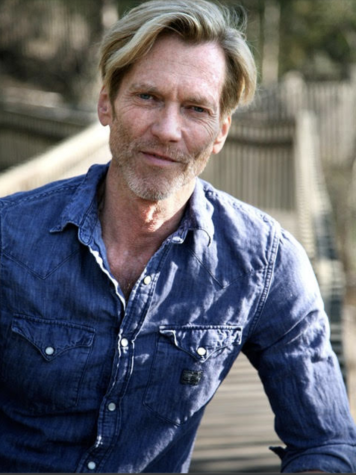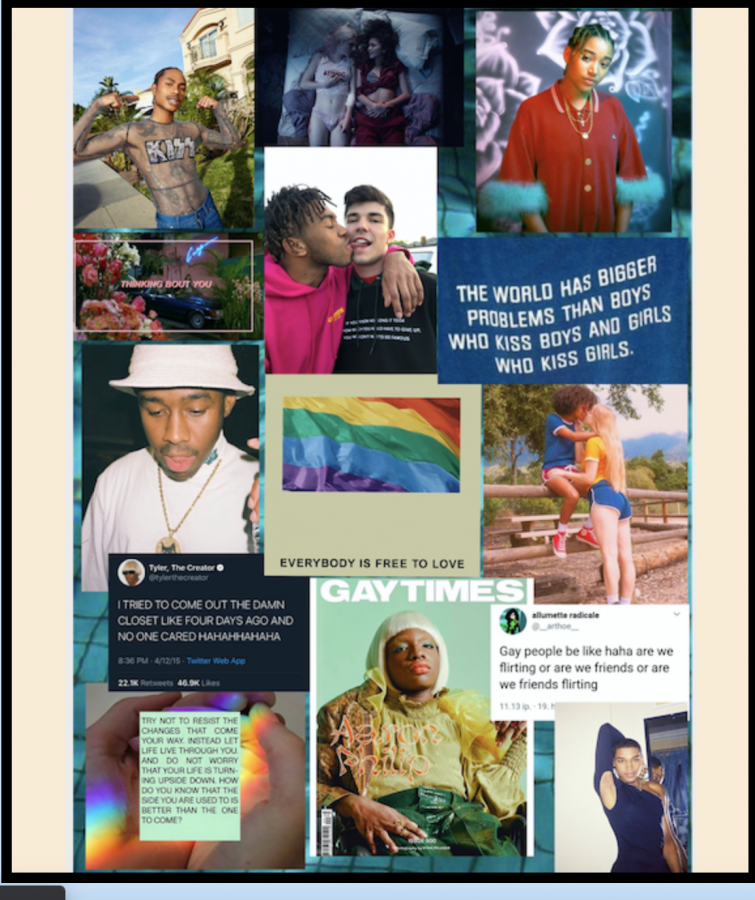CSUN queer studies class brings in the community with their zines and playlists
July 10, 2020
Four in 10 LGBTQ youth don’t feel accepted in the community they live in, according to a study conducted by the Human Rights Campaign. A CSUN Pop Music Queer Studies class, QS 204, led by Matthew Clements, a professor of Queer Studies, set out to help LGBTQ youth find themselves and remind them they are not alone.
Clements partnered with the social service agency Penny Lane Centers and the CSUN office of Community Engagement to create a project that would allow students to use their creativity in a way that could provide support to the LGBTQ community. Penny Lane Centers works heavily with families and provides health programs for adults and children, especially foster youth. The class provided deliverable “zines” — or mini magazines — to reach a larger audience and playlists to the youth as a way to provide support.
When Clements started teaching queer studies in 2014, he aimed to create a classroom environment where lived experiences and the intersectionality between race and sexuality would remain the primary focus in his teaching.

“I wanted a highly intersectional kind of curriculum. Queer studies provides that to a large degree,” Clements said. “I also wanted to take a stand where I could reject and actually stab away at a deficit perspective, the idea that individuals who have marginalized identities are in some way experiencing or living an experience that is a deficit in comparison to other people.”
In the fall student started learning about a musical style known as queercore or homocore, a twist on classic punk music centered around queer musicians targeting a queer audience. One large facet of the music was the incorporation of zines, allowing the music to reach a larger audience. This strategy by queercore gave Clements the idea of incorporating a service-learning project focused on intersectionality in the classroom. The idea stemmed from the fact that queercore artists began making zines and queercore was one of the only musical genres that did this. Clements tried to capture this idea on a smaller scale. He thought if queercore was a queer group reaching a large audience of queer people, what would be the benefit of a queer classroom reaching a queer youth audience?
According to the project’s rubric, “groups generate a multi-faceted online zine incorporating DIY-style wording, texts, illustrations and extensive playlist(s) and videos of queer songs as a way to support, build and normalize emerging queer identities in a contemporary, racially diverse youth audience.”
Students split into groups of eight and spent the semester working on ways to make the project more engaging to their audience. Each project had a mission statement attached depicting in words what the groups hoped to accomplish.
“We hope to convey a sense of queerness and unity with our zines and that our playlists are filled to the brim with jammable queer songs,” one zine‘s statement read. “Being queer can be utterly terrifying but a completely beautiful experience. No matter how you choose to express your identity or identities, what matters is the happiness and love you can feel within yourself and towards yourself.”
Many zines showed iconic LGBTQ musicians like Frank Ocean and Tyler the Creator. Others showed art and gender-inclusive photography. Playlists incorporated the work of endless albums with queer artists including, “That’s So Gay” by Pansy Divison, one of the first openly gay rock bands.
The students’ projects didn’t end as a classroom social experiment. The student’s zines were sent out to Penny Lane Centers as a way to reach the LGBTQ youth that the center works with. In addition, the students’ zines are showcased on the San Fernando Valley Pride website.
Each year, members of the San Fernando LGBTQI+ Coalition and Clements, who serves as an adviser, put on an event at the Van Nuys Civic Center for Pride Month. This year, it went virtual and Clements thought of it as a great opportunity to tie their social service back to our CSUN community by adding the project to the Valley Pride website. This served as a way to further connect LGBTQ youth across the Valley as they enjoyed the event together virtually.
Clements’s work has made an impact. The project has now reached over 18,000 site engagements so far.
Clements explained the class will continue to do community engagement work in his classes, however, he will adapt his engagement style to what is most suitable to the needs of local LGBT advocacy groups.
“The question I always bring to the table is, ‘How can we use the resources that I bring to the class environment to continue to serve?’” Clements said. “I always see (community engagement) is important to students in the classroom because it makes learning practical, it makes it real life.”
Editor’s Note: This story was updated on July 10th at 3:50 p.m. for readability.
